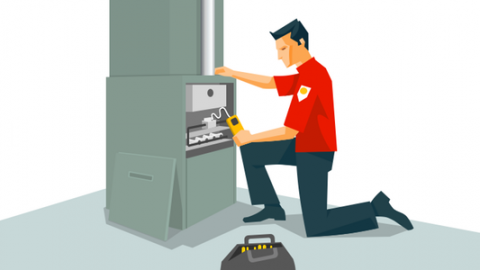
In this section, we will continue to explore strategies manufacturers can produce to improve their process efficiency.
5. Develop a Schedule and Standards for Routine Maintenance
Even the most efficient processes fall short when machinery breaks down due to insufficient maintenance procedures. That’s why it’s crucial to view equipment maintenance as an integral part of process efficiency.
Begin by planning a schedule of routine checks for each piece of equipment. Next, set standards regarding the conditions that may necessitate more immediate inspections. For example, if team members notice unusual wear patterns, abnormal levels of tension or other strange characteristics of a machine’s components several times in a short period, it’s probably time to be proactive and investigate further.
Another way to connect process efficiency to routine maintenance is to ensure all team members know the correct ways to report problems. They need to know which channels to go through to notify superiors of suspicious findings, how to submit reports and other necessities. Bringing clarity to each step helps prevent mistakes and enforce uniformity.
Here are some basic steps to follow when bringing uniformity to the equipment maintenance process:
6. Change the Factory Floor Layout to Cut Out Unnecessary Movement
Excessive movement by employees in a manufacturing plant can hinder productivity and cause other disruptions. Consider strategically rearranging the factory floor layout so it allows people to do their jobs with limited amounts of movement. Get started by removing unused tools from the area and setting up the ones employees need in ways that make sense for the jobs they perform.
See if there are ways to shorten the path of travel by adjusting the placement of the equipment in instances where employees must move components between machines. In 2016, Honda tried an innovative upgrade to the traditional assembly line layout with its assembly revolution cell (ARC) line. It has a moving conveyor holding a vehicle and a complete set of parts laid out in a sequence. Four assemblers then step onto a platform and ride around a U-shaped cell to put the car together. Each employee handles several tasks along the assembly line, thereby broadening the assortment of responsibilities dealt with by each person. Honda says this setup increases the assembly line efficiency by 10 percent and reduces material handling by the same amount.
Stay Dedicated and Anticipate Positive Results
These suggestions won’t cause overnight improvements, but they’re worth trying as part of a longstanding commitment to enhancing process efficiency.
No matter which ones you go with, don’t forget to seek feedback along the way.
Process improvement is something manufacturers often don’t know how much they need until they get started and notice the favorable outcomes. The tips here offer information to stimulate success, especially when people stay positive and think about the advantages of higher efficiency within their facilities. Flexibility and a willingness to adapt will help entities thrive.
Source: Robotiq